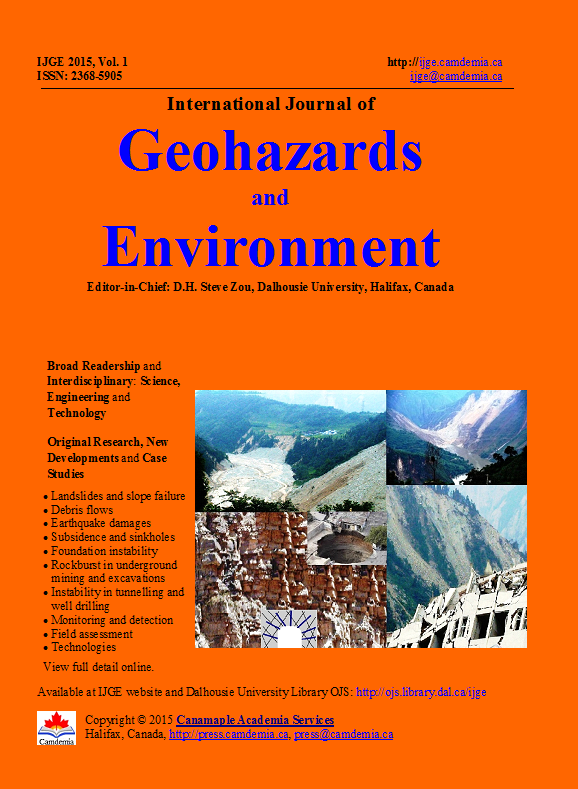A New Physically-Based Simulation Framework for Modelling Flow-Like Landslides
DOI:
https://doi.org/10.15273/ijge.2015.03.012Keywords:
natural hazards, flow-like landslides, GIS, depth-integrated model, risk assessmentAbstract
Flow-like landslides are one type of the most catastrophic natural hazards that often cause significant loss of life and property. Numerical modelling has become a powerful tool to facilitate better risk management of this type of natural hazards. In the past decades, a number of models have been developed to simulate flow-like landslides. Among them, the depth-integrated models based on continuum theory have gained wide-spreading popularity. However, these models are generally developed either on the locally curved coordinate system that prevents the direct use of geographic information system (GIS) data or by not taking into full account of the vertical acceleration on steep slopes that may lead to loss of accuracy. These limitations hinder the wider application of these models in simulating field-scale landslides with complex topography. This paper presents a new depth-integrated model for more robust simulation of flow-like landslides. The model is developed on a fixed global Cartesian coordinate system to enable the direct use of the widely available GIS data. To gain more favourable accuracy, the new model also takes into account the effect of the vertical acceleration. The improved performance of this new model is validated against an experimental test case.Downloads
Issue
Section
License
Copyright, Terms and Conditions
The International Journal of Geohazards and Environment (the Journal) is published by Canamaple Academia Services (the Publisher) online with open access, under a Creative Commons Attribution-Noncommercial license (CC-BY-NC) (http://creativecommons.org/licenses/by-nc/4.0/). Authors (the Authors) submitting papers (the Work) for publication in the Journal automatically agree to the following terms and conditions.
1. Under the license (CC-BY-NC), Authors give permission for others to share and reuse the Work, as long as the original source and author(s) are properly cited (i.e. a complete bibliographic citation and link to the Journal website) and the material is not used for commercial purposes. Any sharing or reuse must however indicate the original CC-BY-NC license terms of the work.
2. Authors transfer and assign to the Publisher all copyright in and to the Work. However Authors retain all proprietary rights except the copyright, related to the Work and also retain the rights a) to use, reproduce, distribute, and publicly display the Work in any medium in connection with the Authors‘ academic and professional activities, such as teaching, presentations and lectures, b) to create derivative works from the Work and to make full use of the Work in future research and publications, c) to authorize others to make any non-commercial use of the Work, d) to make both the pre-published and final-published versions available online in institutional and/or disciplinary repositories or on their own websites with a citation and link to the original paper published in the Journal.
3. Authors warrant that the Work is their original work, it is not copied from anywhere or anyone else, they are totally responsible for the authenticity, originality, validity and accuracy, and the facts and views are their own, that the Work contains no matter which is defamatory or infringes any literary or proprietary rights, intellectual property rights, or any rights of privacy, and that the Work has not been simultaneously submitted to any other journals or publishers. Authors further agree that their manuscripts whether accepted or rejected will not be returned and the rejected manuscripts will be disposed at the journal editor's discretion.
Disclaimer: The Publisher, the Journal and the editors accept no responsibility for statements or opinions expressed by authors. Use of information and materials in the Journal is the sole responsibility of users.


